
Farming
Winterizing the Farm: Photo Essay
Photos by Chuck Lacasse.
Winters can be rough, there’s no denying it—both on animals and on the humans who care for them. We often get asked how Organic Valley farmers care for their animals in the cold months, so we’re giving you a peek behind the scenes with one of our farmer-owner families as they do morning chores and get things ready for winter.
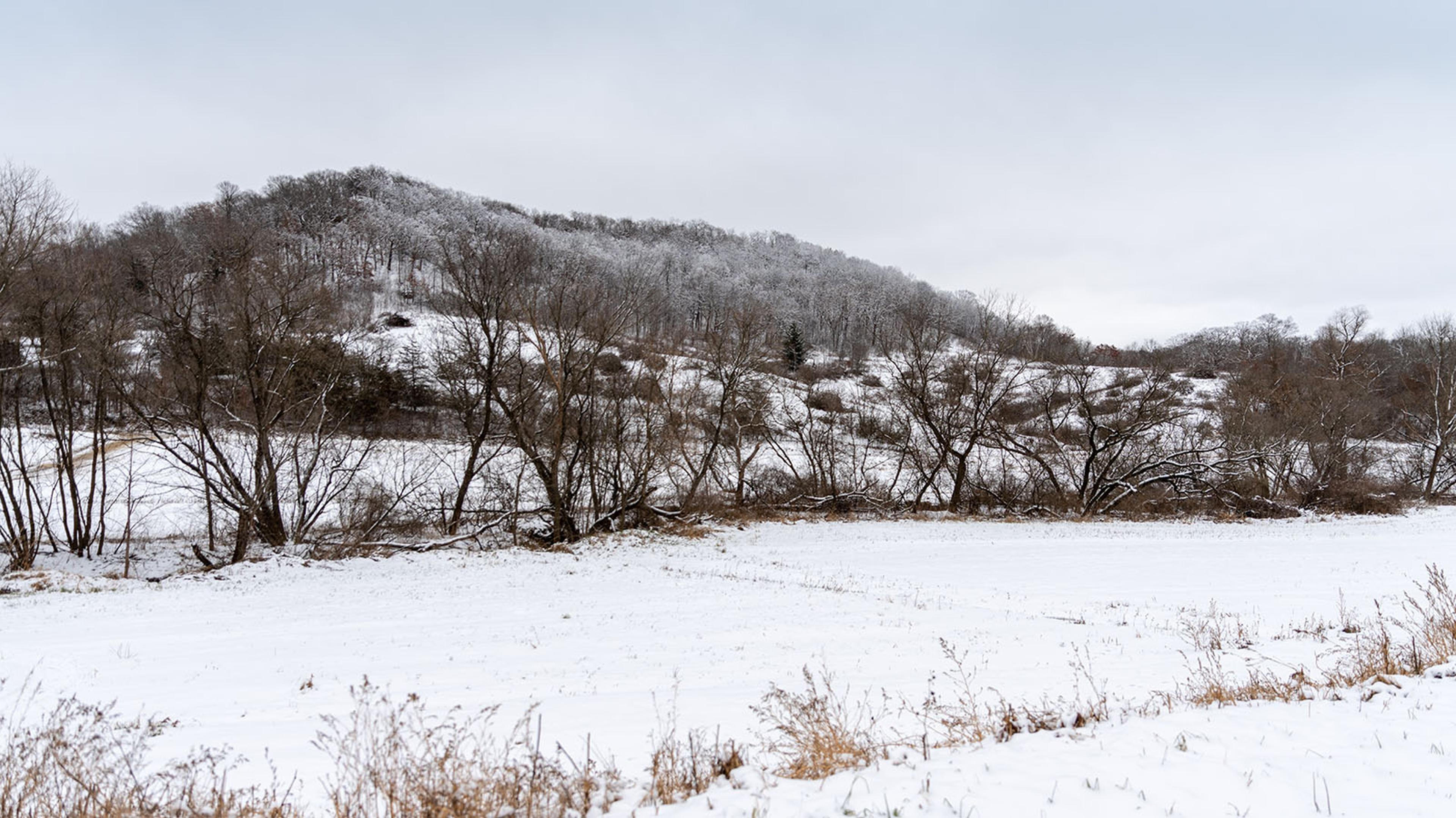
Snow-covered hills overlooking the Ralph-Hemsteads’ Wisconsin farm
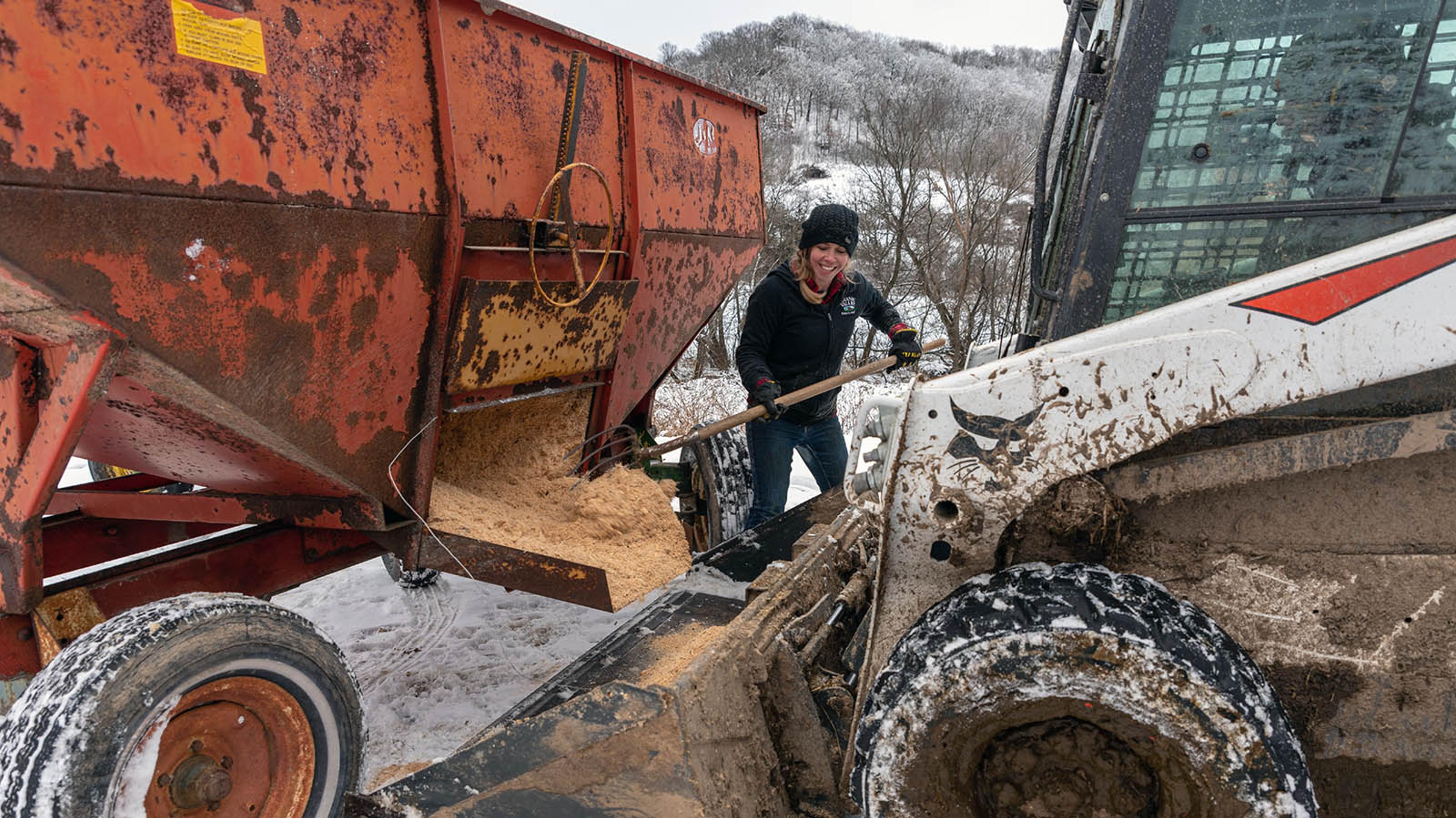
Kristina shovels bedding into an end-loader.
Meet Kristina Ralph. She and her husband, Robert, along with her brother and father, Justin and David Hemstead, run their family's organic dairy, Lazy Daze Acres, in rural southwest Wisconsin. The state is known for its cold winters, but the Hemstead family has been farming here for 125 years, so they know how to get ready.
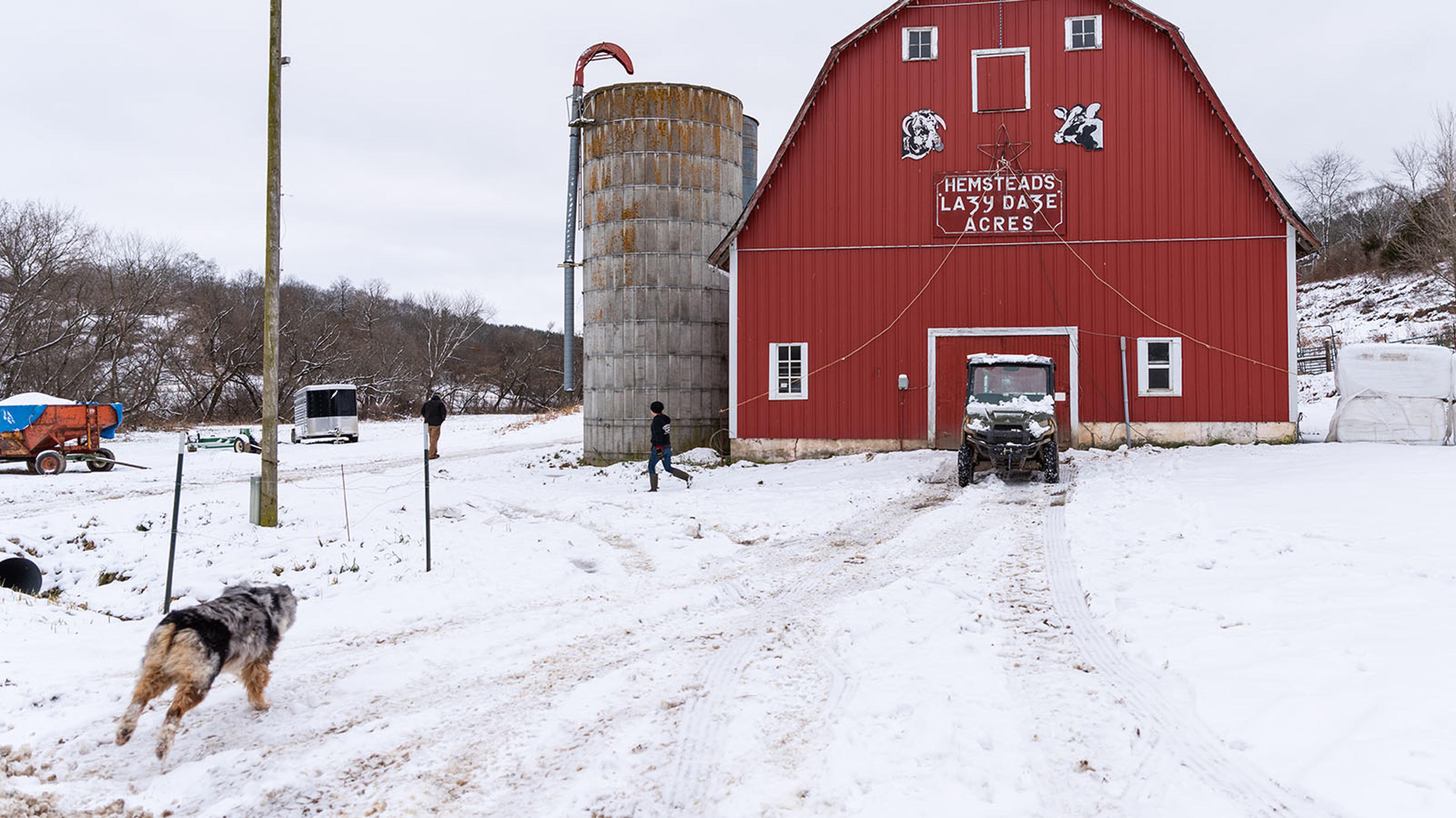
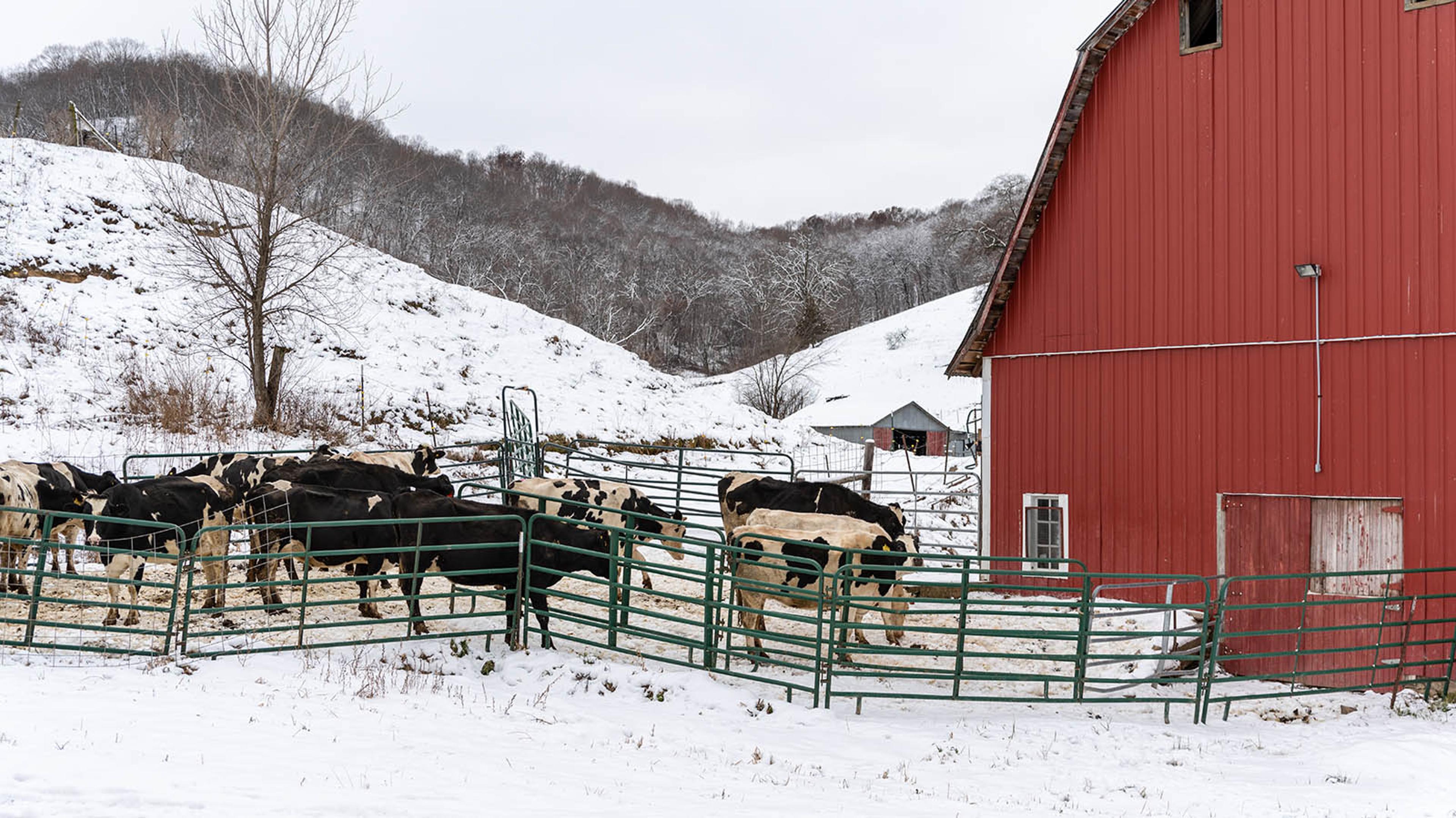
Cows get some fresh air in the winter paddock.
All Organic Valley dairy farms provide access to the outdoors year-round. Just like kids, cows enjoy fresh air and sunshine even on the coldest days.
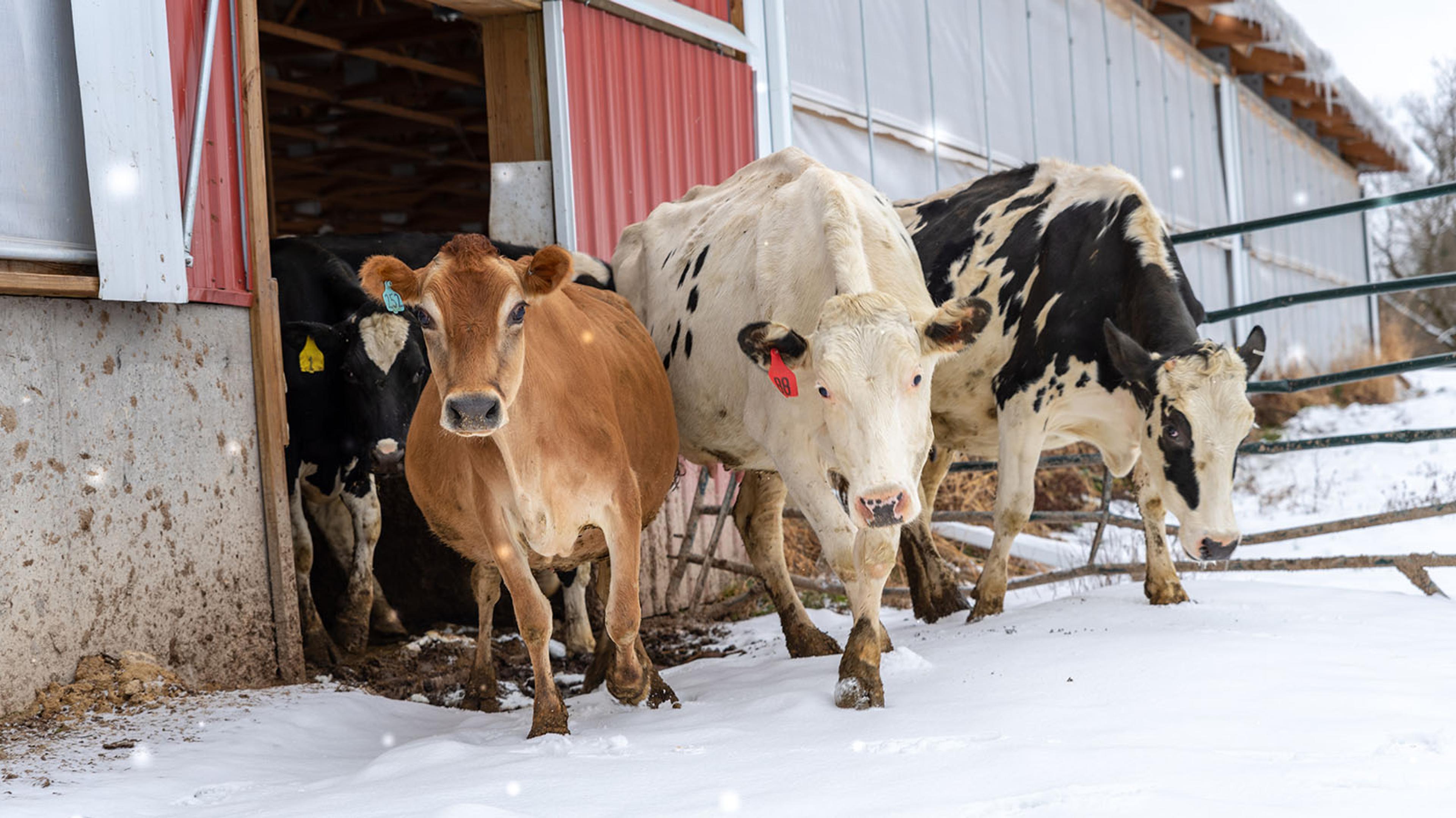

These curious ladies enjoy heading outdoors after being milked. When well fed and well cared for, they have no trouble keeping warm.
Cows have big digestive systems, called the rumen, with multiple stomachs that ferment and break down their food to get all the nutrients they can out of it. This process is long and slow, and the fermentation in their gut creates heat.
Put simply, you could say cows carry around their own internal space heaters!

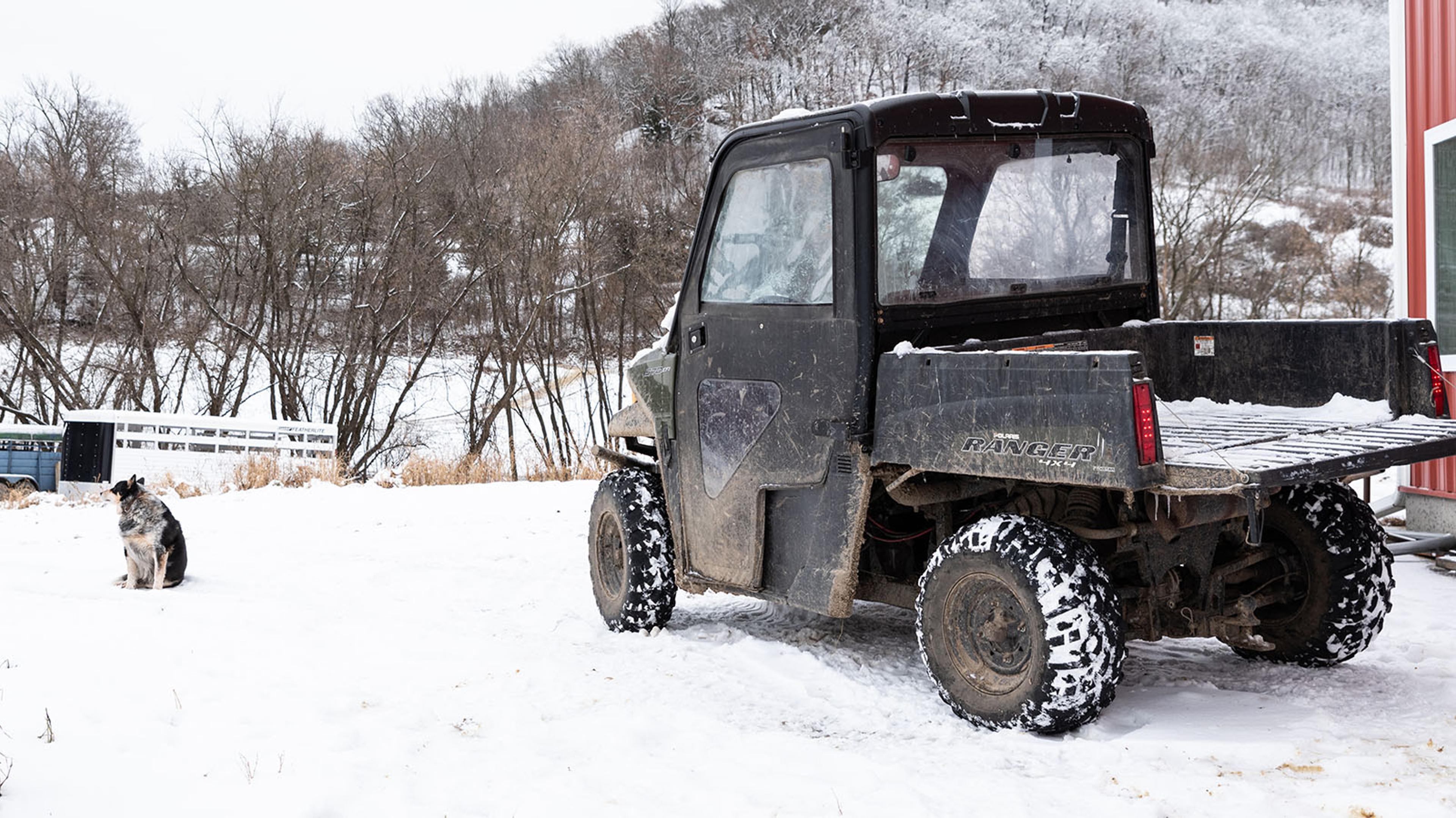
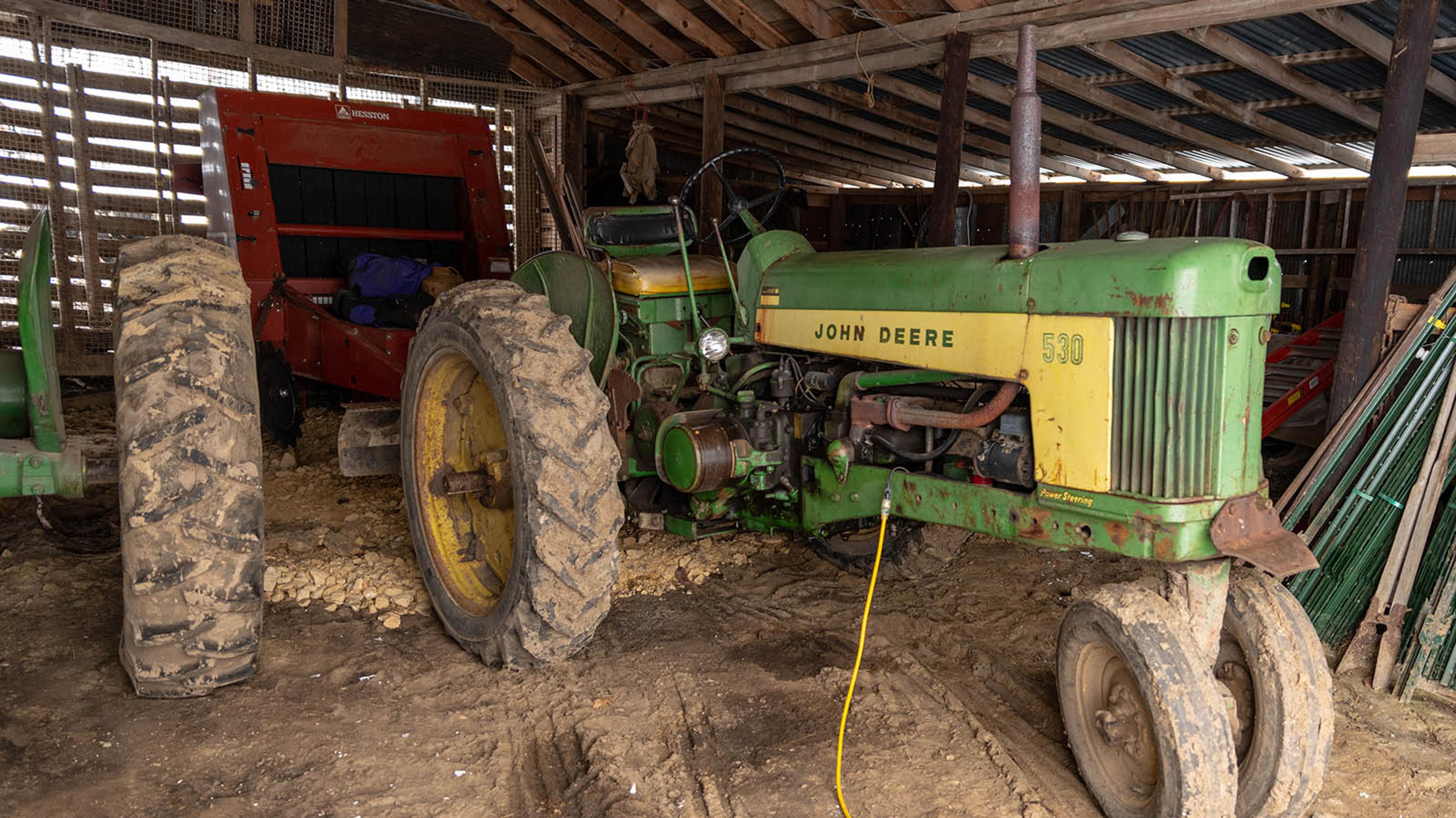
This old John Deere diesel tractor is plugged in so the engine doesn’t freeze.
Being in a rural area away from towns, it’s important that all the vehicles on the farm get a tune-up before the really cold weather sets in. During winter, this covered four-by-four will make it easier to get from one side of their 300 acres to the other. They also use an end-loader and multiple tractors for snow removal and various chores around the farm. This old John Deere diesel tractor is plugged into a wall outlet so that the engine doesn't freeze up.
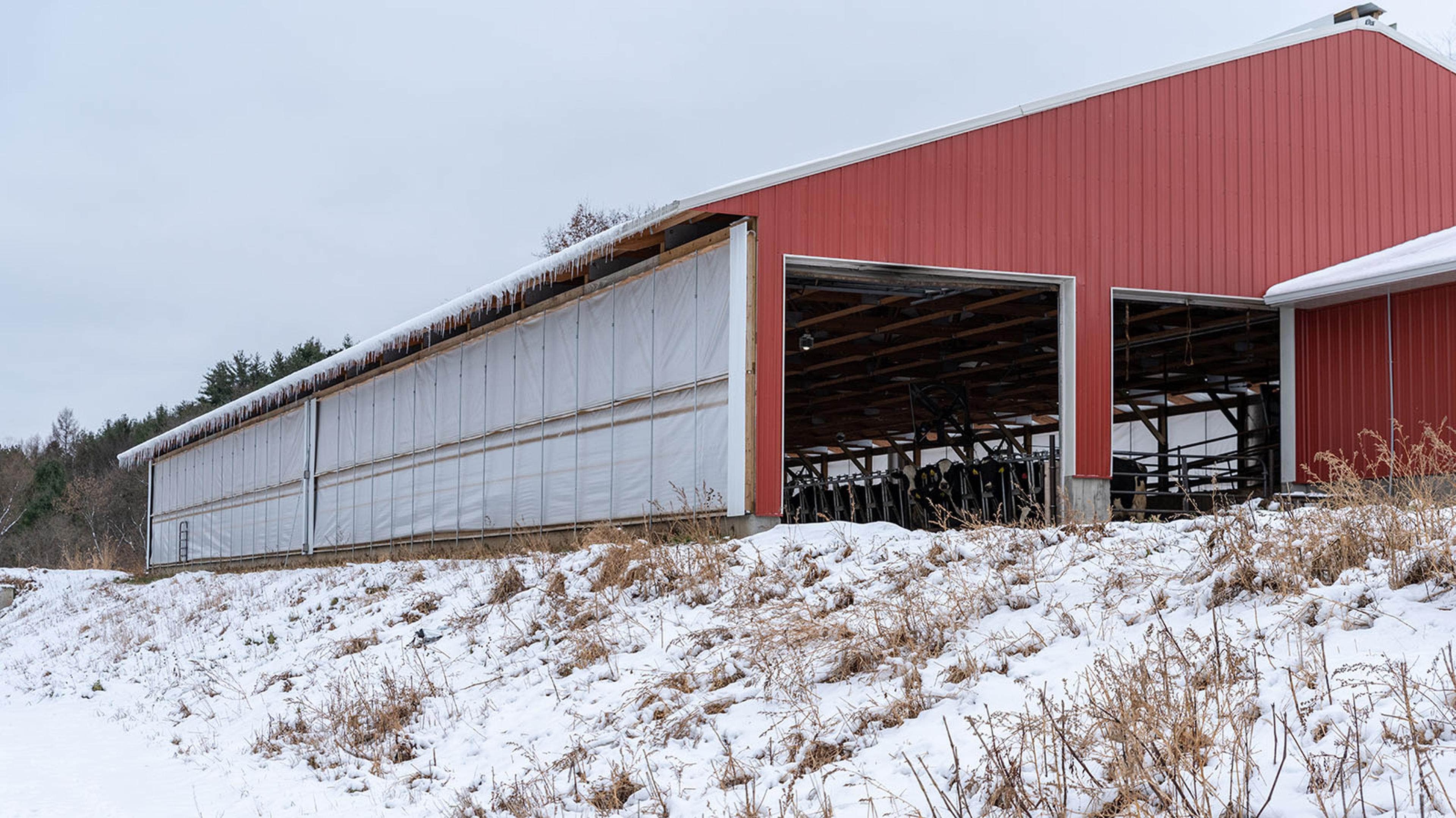
This modern metal freestall barn allows the cows plenty of space inside, and the walls can be rolled up for added ventilation if needed, which is important to keeping cows healthy.
In addition to the lovely red milking parlor seen above, the family has a modern-style free-stall barn (also red, in the traditional fashion) where the cows eat, relax and chew their cud, and stay cozy when it's too cold to be outdoors.

Kristina sets the barn temperature to a comfortable 61 F.
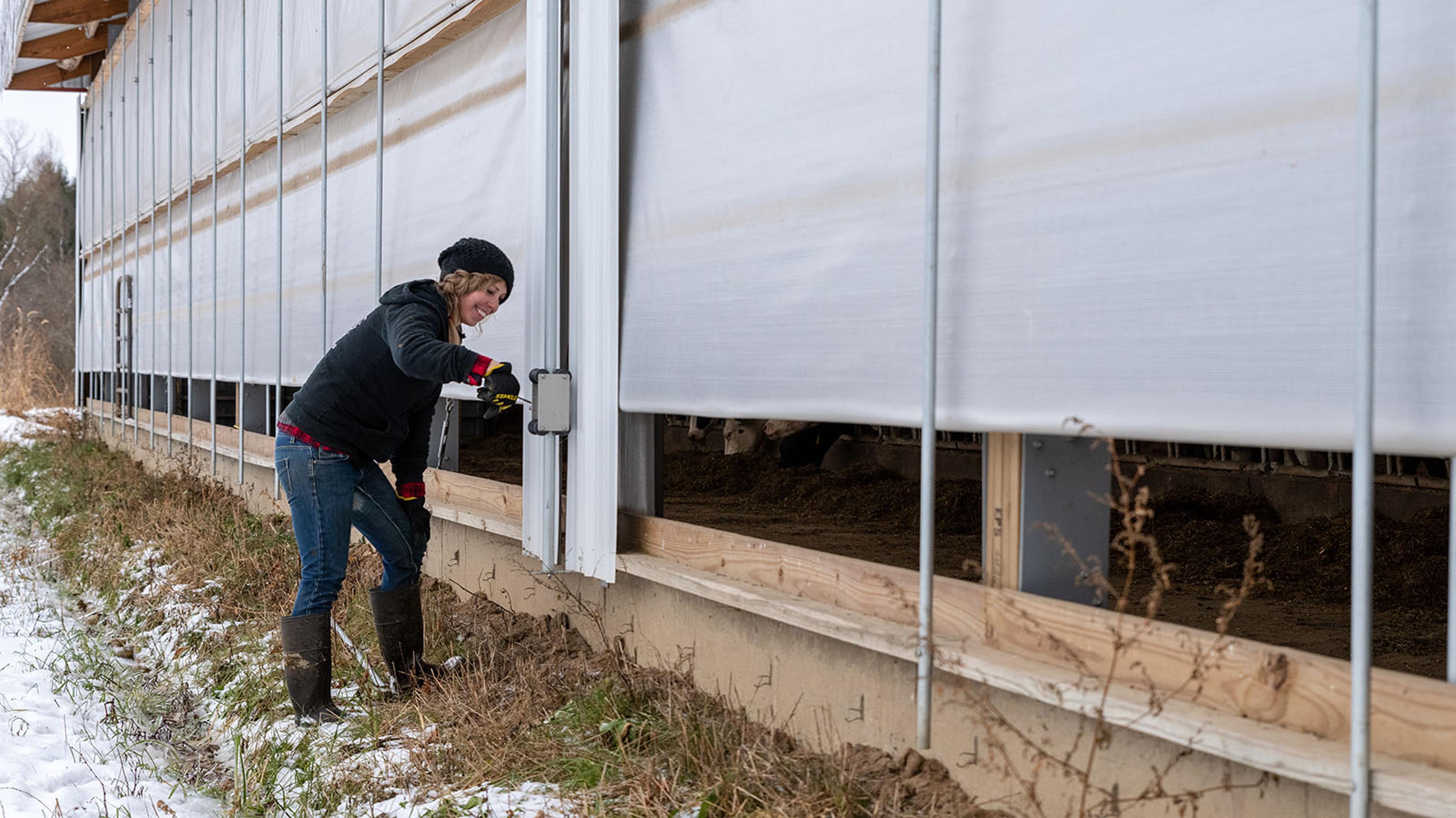
The barn’s walls can be opened or closed depending on the weather. Kristina lowers the sidewalls for the winter but still leaves some space for airflow.
Many Organic Valley farms will also run fans all through the winter because, just like with people, when we’re all cooped up with stale air, it’s easier to get sick. Good ventilation prevents the spread of illness among the cows, and we’re all about prevention on our farms.

Their big tractor is also kept in good condition for hauling the cows’ sawdust bedding closer to the barn. Chains on the wheels are necessary when the driveways get icy.
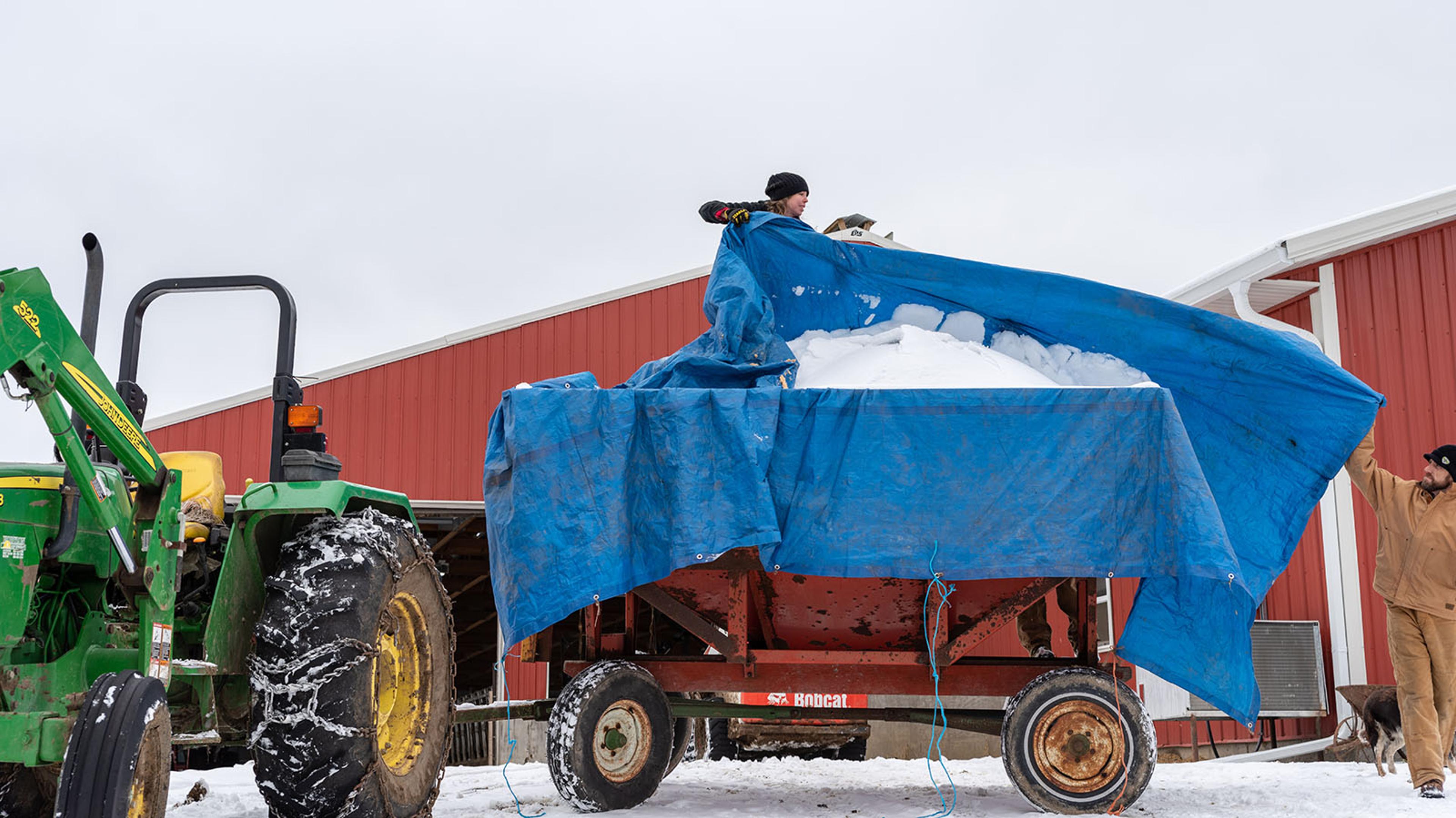
Kristina pulls off a tarp that has been keeping the cows’ bedding dry until it’s ready to be used.
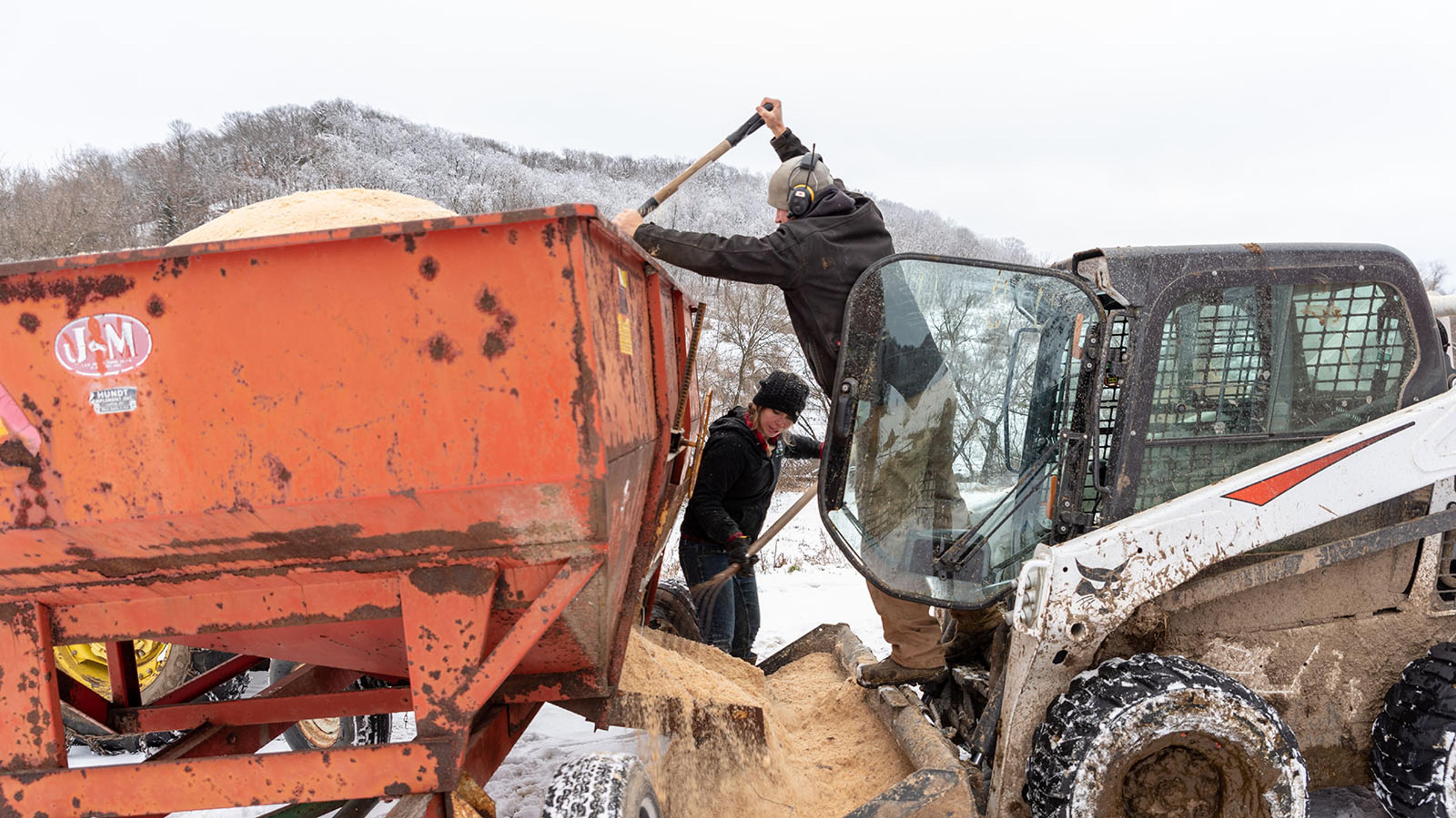
Working together is part of the success of any farm, especially in winter!
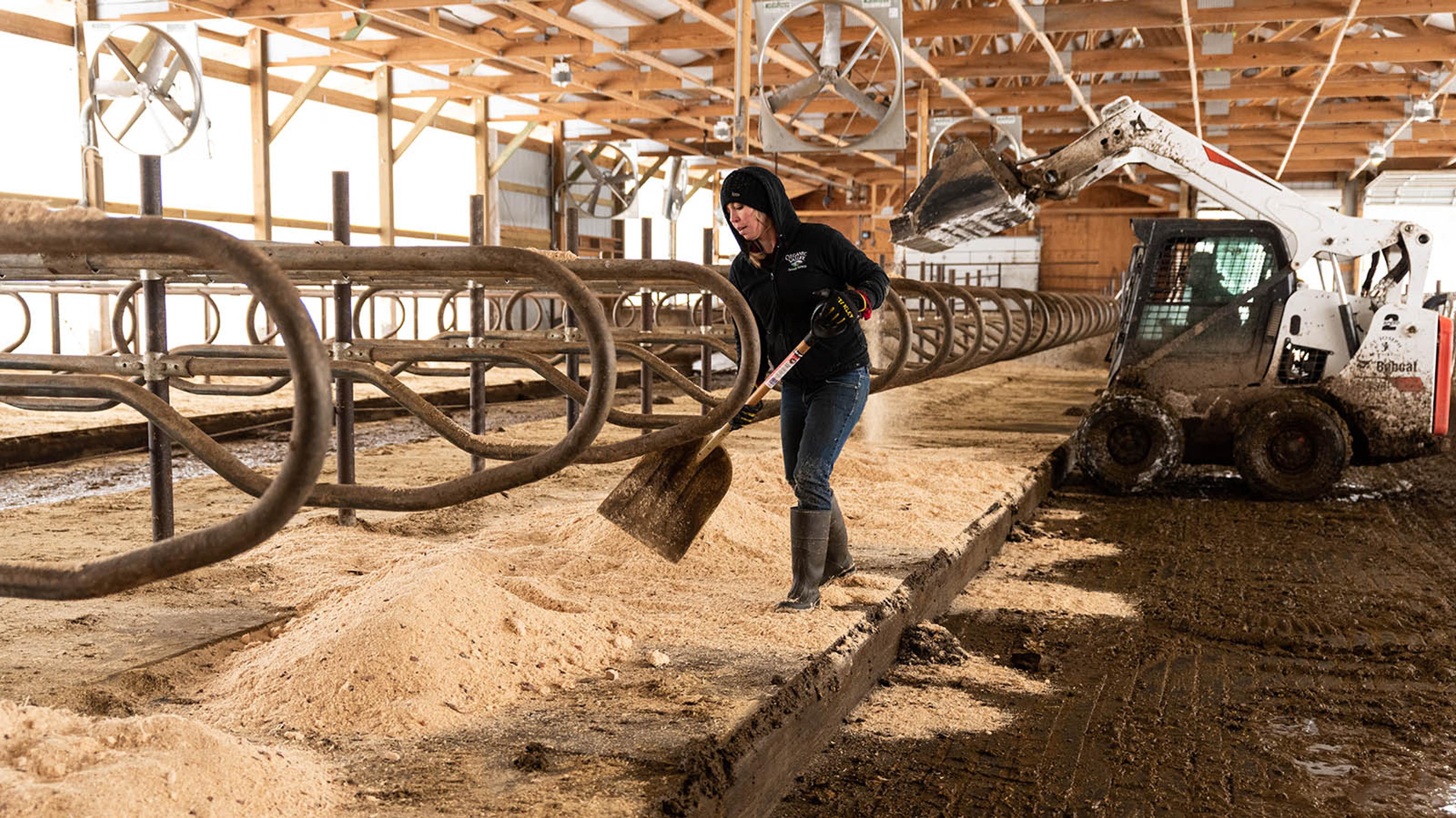
While her brother, Justin, brings loads of sawdust bedding into the barn with the end-loader, Kristina spreads it out into deep, warm beds. There are enough stalls here for every cow to have her own personal space to lie down if she wants. They replace the bedding every three days to keep the cows happy and comfortable all winter long.

In winter, Organic Valley cows eat stored forages that were harvested and dried last summer.
Most Organic Valley dairy farms, like the Hemstead farm, are pasture-raised farms, whose cows eat fresh and dried forages as well as a ration of feed grains with additional nutrients from organic-approved supplements like herbs and molasses.
A portion of Organic Valley farms are 100% grass-fed, which means these farmers have to store up enough dried grasses and forages, plus nutrition supplements, for their herds to eat through the winter without feeding any grain. No matter what the cows eat, Organic Valley farmers make sure their cows receive the right nutrition to stay healthy and have plenty of energy throughout the cold season. (Here's more about how cows are 100% grass-fed in winter.)
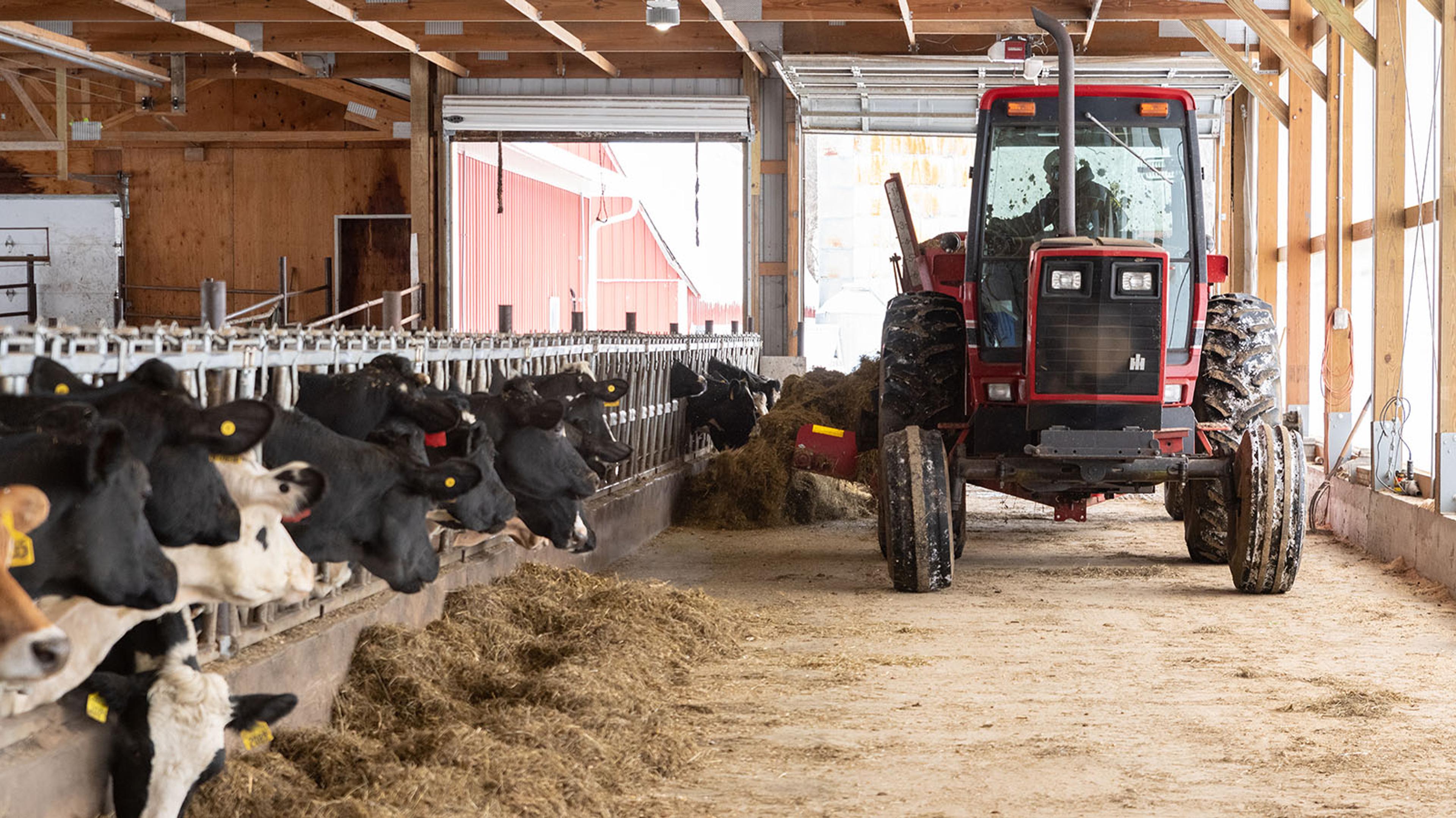
These cows know what’s coming—breakfast!
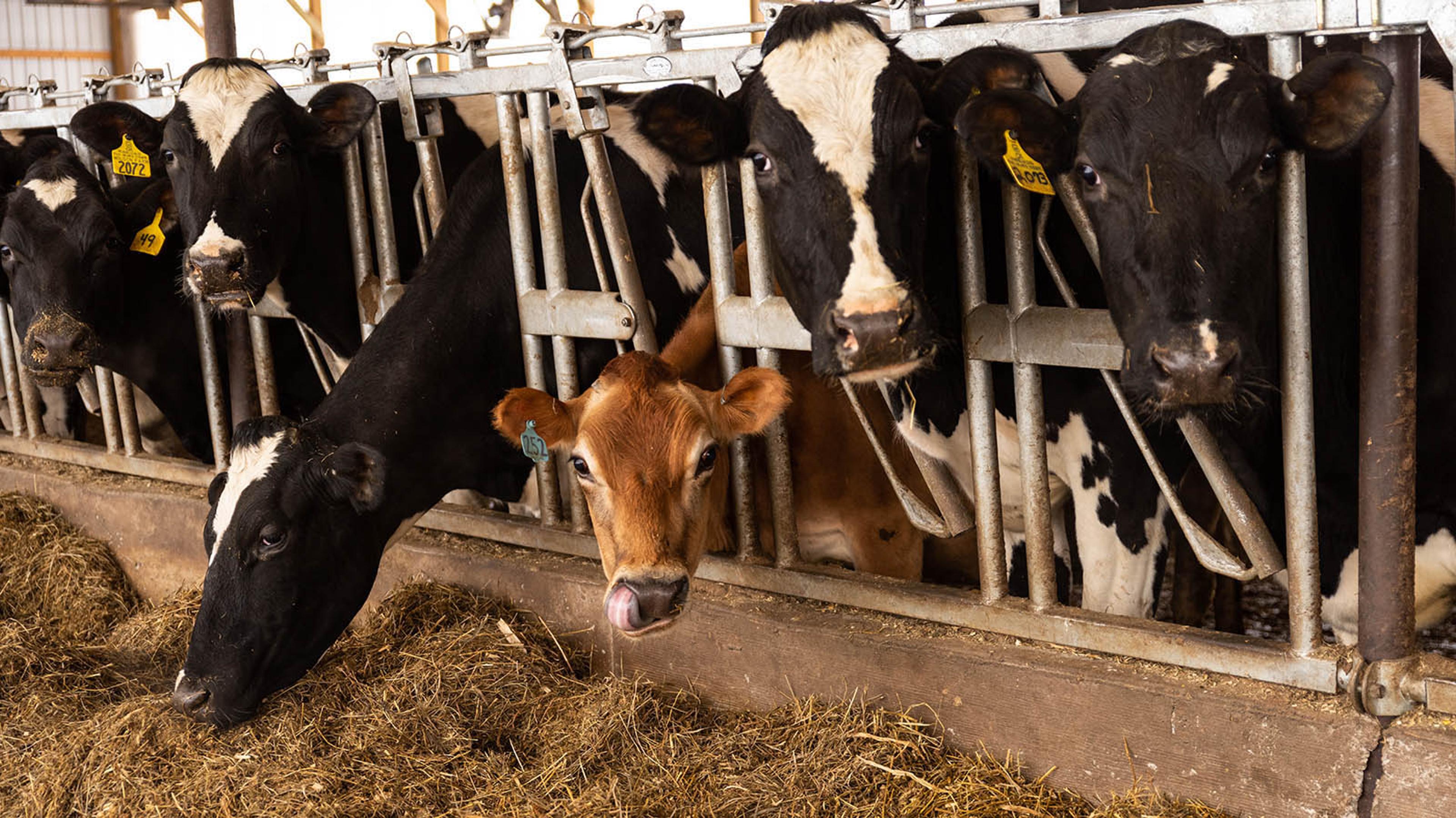
This Jersey cow licks her nose in anticipation of good food.
Don’t worry, the contraption you see here isn’t restraining the cows. These gates keep them spread out during mealtimes so that everyone can comfortably get to the food, including the smaller cows, like this pretty Jersey here. (Holsteins can be a little pushy when they hear the breakfast bell...er...tractor.)
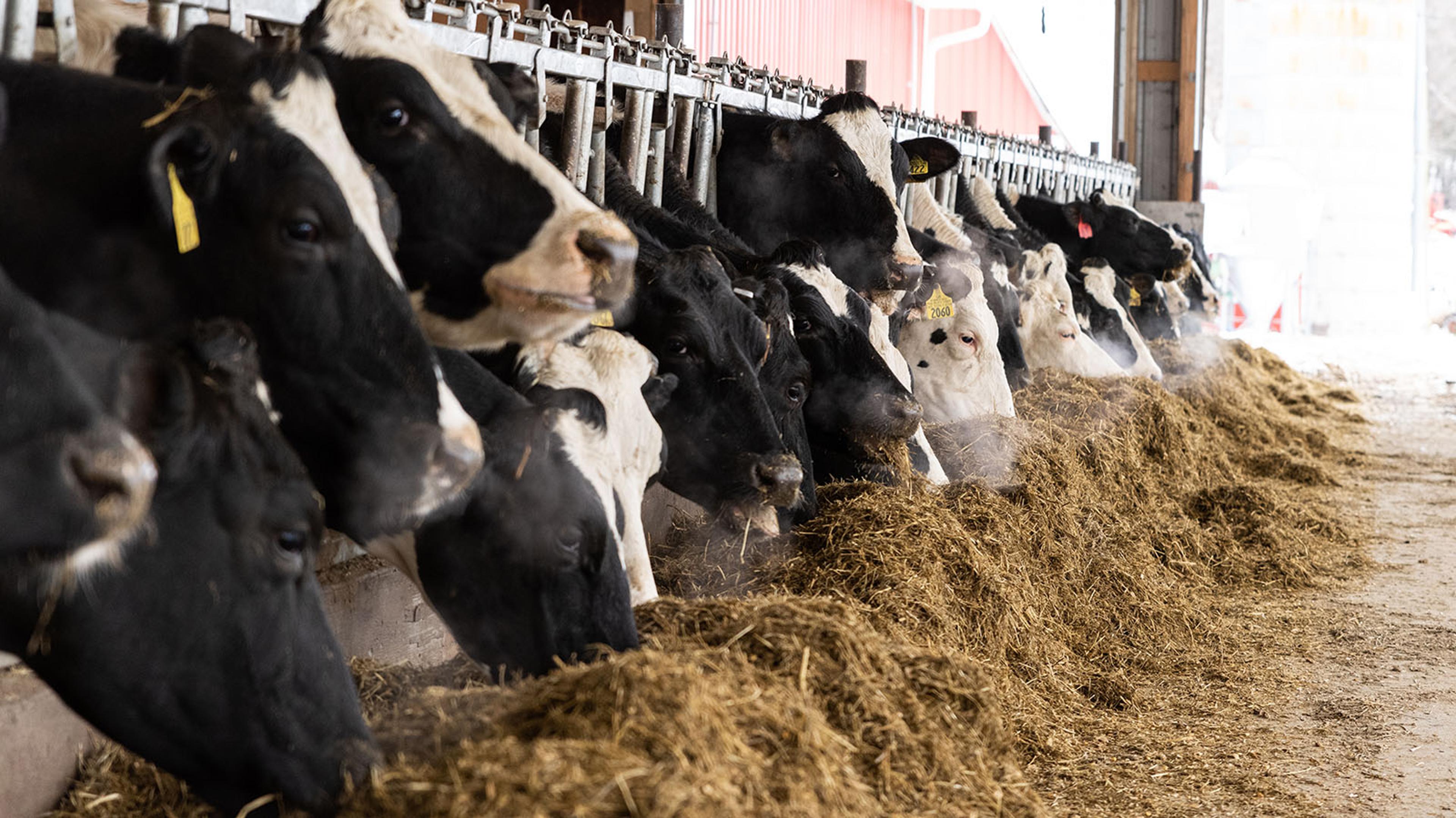
There’s nothing like sticking your nose in a pile of sweet hay on a brisk winter morning.
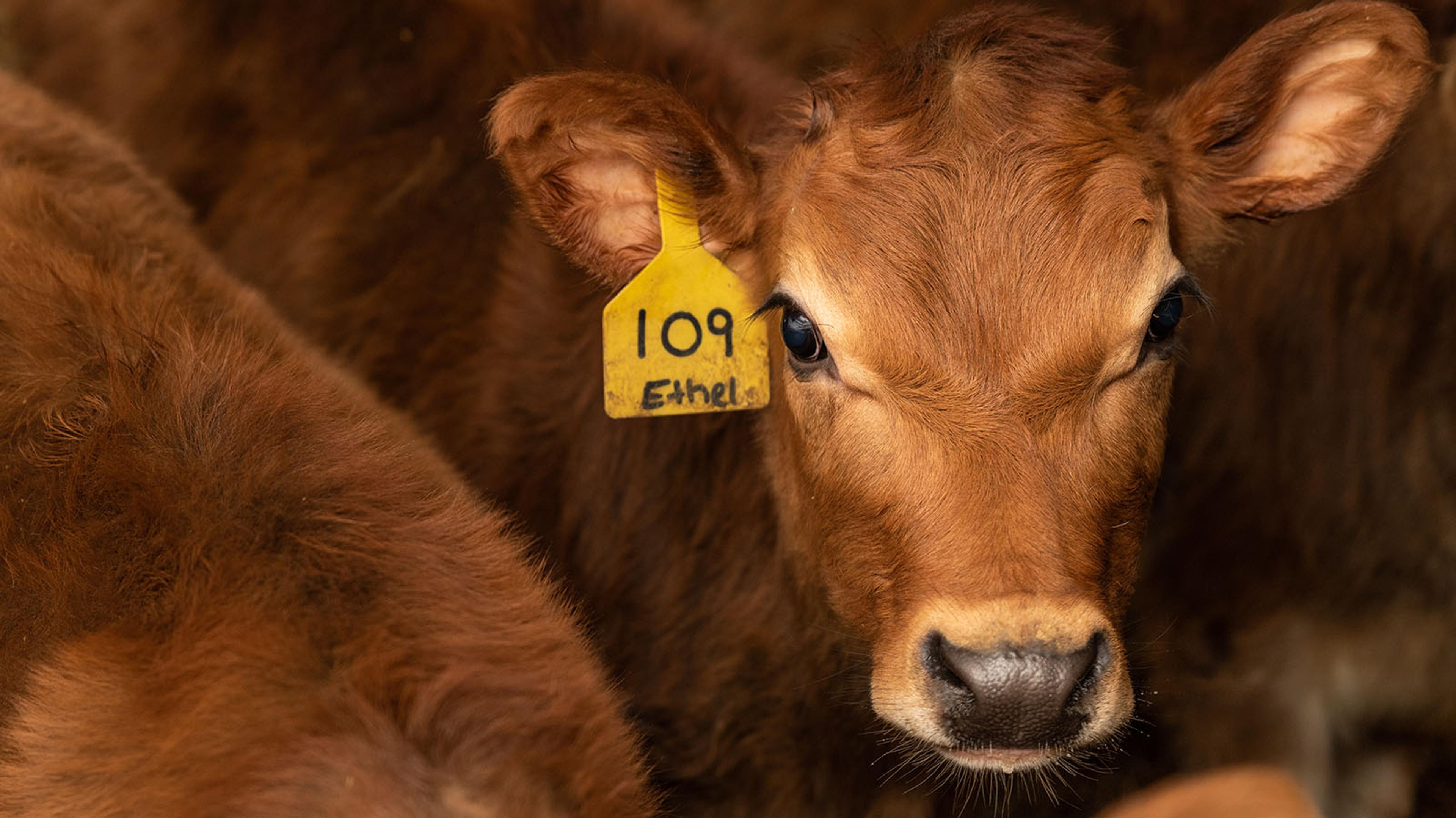
Baby animals have slightly different needs in winter than adult cows, which have big, fermenting rumens to keep them warm from the inside.
Calves may receive more food so they have plenty of energy to keep warm. They will also grow thicker winter coats. Organic farmers monitor calves closely and always strive to provide comfort and prevent illness.
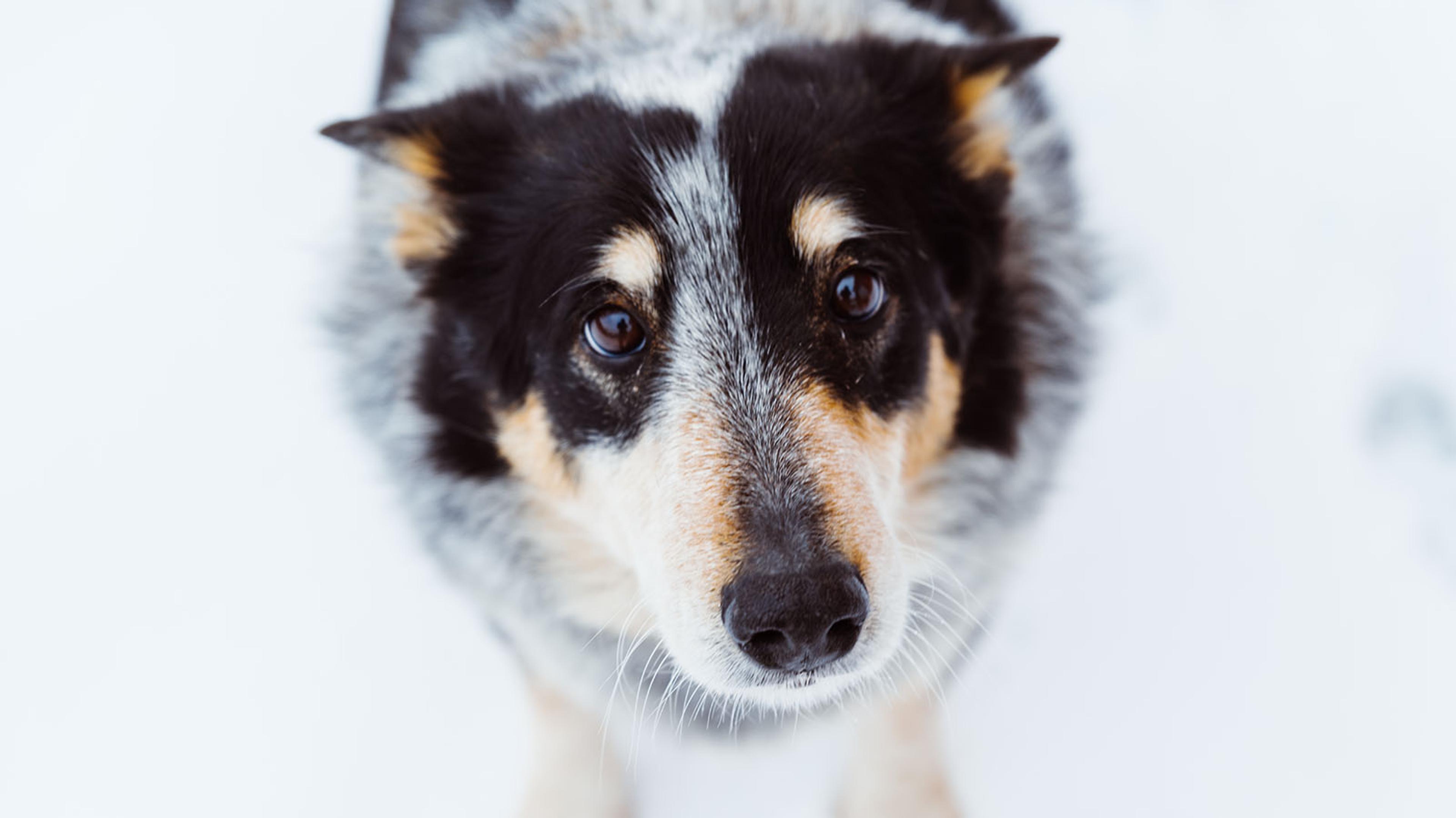
Bandit the dog is really good at making puppy-dog eyes.
These puppy-dog eyes belong to Bandit. No farm is complete without a good farm dog (or three).
Want to learn more about Organic Valley farms?
Learn how our Grassmilk® farms are 100% grass-fed in winter.
And keep an eye out for our Farm Discovery tours that occur during warmer months all over the U.S. If there isn’t one near you, check out this virtual farm tour and our Soul of Farming video series for more behind-the-scenes looks on our farms.
Related Articles
- Tags:
- animal care,
- farm life,
- grass-fed

















